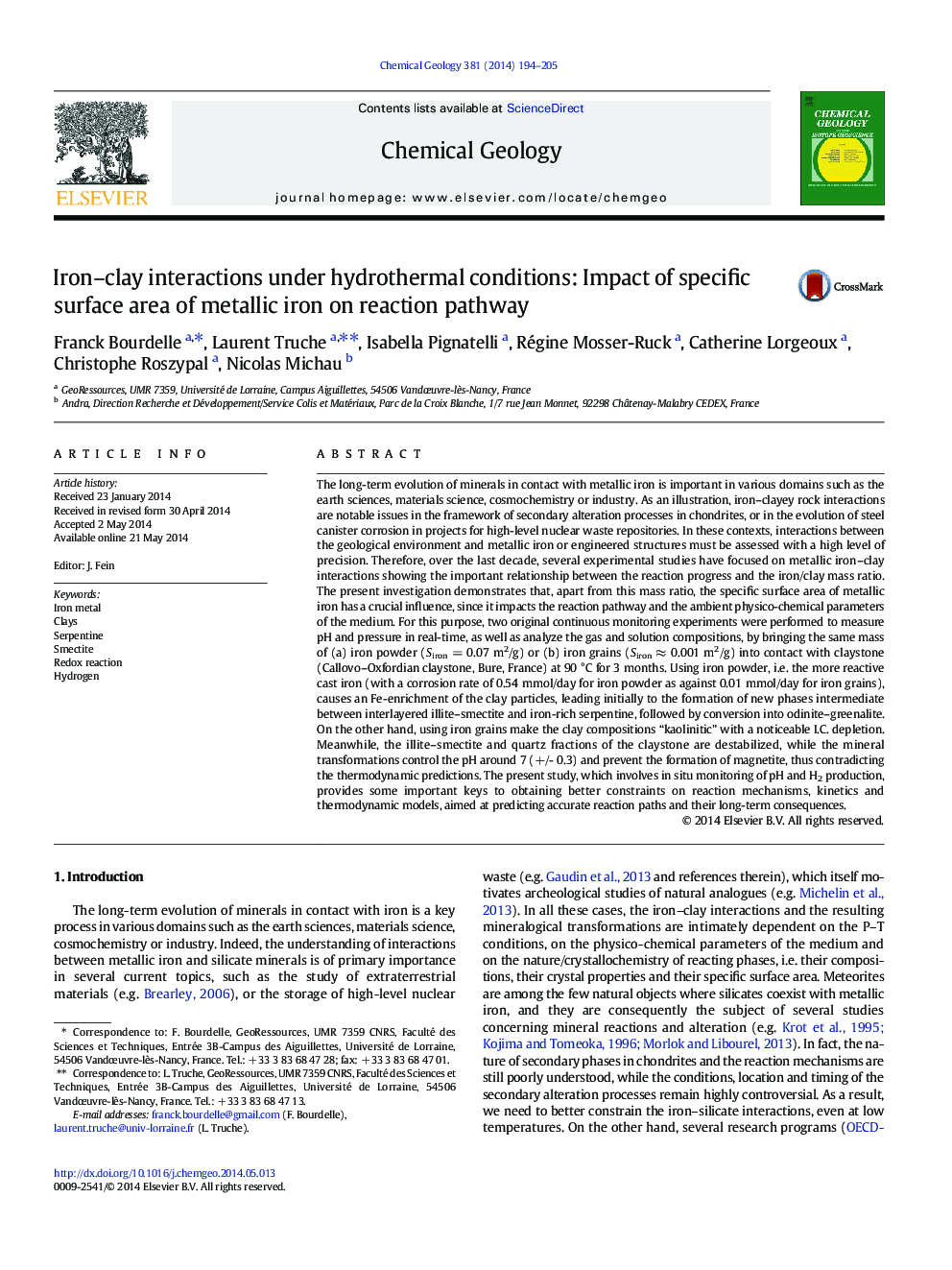| کد مقاله | کد نشریه | سال انتشار | مقاله انگلیسی | نسخه تمام متن |
|---|---|---|---|---|
| 6436618 | 1637591 | 2014 | 12 صفحه PDF | دانلود رایگان |

- Iron-clay experiments have been performed for 90 days at 90 °C.
- pH, P, T, gas and solution compositions were continuously in situ monitored.
- Effect of specific surface area of metallic iron on system evolution was quantified.
- The iron corrosion rate was determined through the H2 degasing measurement.
- Illite-smectite-quartz-metallic iron system evolves toward Fe-serpentine composition.
The long-term evolution of minerals in contact with metallic iron is important in various domains such as the earth sciences, materials science, cosmochemistry or industry. As an illustration, iron-clayey rock interactions are notable issues in the framework of secondary alteration processes in chondrites, or in the evolution of steel canister corrosion in projects for high-level nuclear waste repositories. In these contexts, interactions between the geological environment and metallic iron or engineered structures must be assessed with a high level of precision. Therefore, over the last decade, several experimental studies have focused on metallic iron-clay interactions showing the important relationship between the reaction progress and the iron/clay mass ratio. The present investigation demonstrates that, apart from this mass ratio, the specific surface area of metallic iron has a crucial influence, since it impacts the reaction pathway and the ambient physico-chemical parameters of the medium. For this purpose, two original continuous monitoring experiments were performed to measure pH and pressure in real-time, as well as analyze the gas and solution compositions, by bringing the same mass of (a) iron powder (Siron = 0.07 m2/g) or (b) iron grains (Siron â 0.001 m2/g) into contact with claystone (Callovo-Oxfordian claystone, Bure, France) at 90 °C for 3 months. Using iron powder, i.e. the more reactive cast iron (with a corrosion rate of 0.54 mmol/day for iron powder as against 0.01 mmol/day for iron grains), causes an Fe-enrichment of the clay particles, leading initially to the formation of new phases intermediate between interlayered illite-smectite and iron-rich serpentine, followed by conversion into odinite-greenalite. On the other hand, using iron grains make the clay compositions “kaolinitic” with a noticeable I.C. depletion. Meanwhile, the illite-smectite and quartz fractions of the claystone are destabilized, while the mineral transformations control the pH around 7 (+/- 0.3) and prevent the formation of magnetite, thus contradicting the thermodynamic predictions. The present study, which involves in situ monitoring of pH and H2 production, provides some important keys to obtaining better constraints on reaction mechanisms, kinetics and thermodynamic models, aimed at predicting accurate reaction paths and their long-term consequences.
Journal: Chemical Geology - Volume 381, 14 August 2014, Pages 194-205